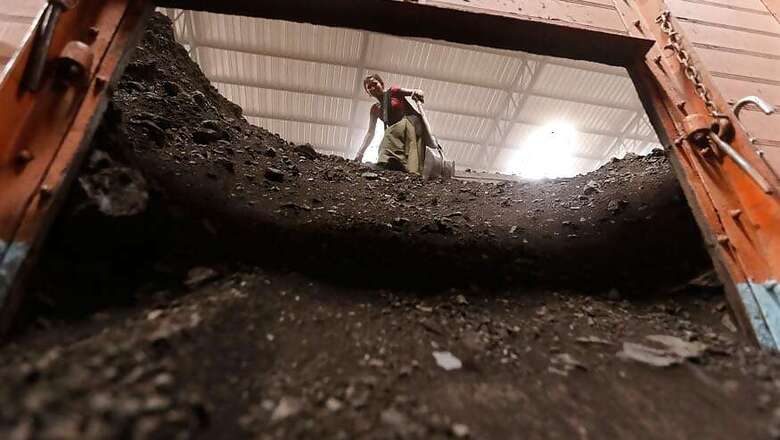
views
The Comptroller and Auditor General has raised serious questions about the first two rounds e-auction of coal blocks and said the level of competition was disappointing in the competitive bidding.
Eleven coal blocks went under the hammer in the first two rounds of mines auction held in 2015 on account of multiple bids by corporate groups made through JVs or group subsidiaries, the CAG said.
"Audit could not draw an assurance that the potential level of competition was achieved during...bidding of 11 coal mines auctioned in the first two tranches," CAG said in the latest report on e-auction of coal mines.
In 11 out of 29 coal mines successfully e-auctioned in first and second tranche, a number of qualified bidders (QBs) in the e-auction stage were from the same company/parent subsidiary company coalition/joint venture (JV), according to the CAG report tabled in Parliament.
In a scenario where the standard tender document (STD) allowed the participation of JV and simultaneously limited the number of QBs which could participate in the e-action, Audit could not draw an assurance that the potential level of competition was achieved during the stage II bidding of these 11 coal mines auctioned in the first two tranches.
In the third tranche, the Coal Ministry amended the clause of JV participation with the objective of increasing participation, it added.
Reacting on the report, an official source said that as only 6 per cent of the qualified bidders were joint ventures companies and only one successful bidder was a JV company, it is clear that this provision did not restrict competition.
"The Delhi High Court in W.P (c) No 1384/2015 has upheld this provision of the auction. It has stated that the process is neither arbitrary or irrational or designed to favour any particular bidder and has worked out well," according to the source.
Inconsistencies and inaccuracies in following some of the assumptions and various errors in computing of intrinsic values resulted in under-determination of upfront amounts in 15 blocks, under-determination of floor prices in 6 non-regulated sector coal mine and revised fixed rates in all nine power sector coal mines, CAG said.
The government auditor further said that Moitra coal mine contained washery grade coking coal, which was to be washed out before utilisation in the specified end use plant (SEUP).
Approved plan for this mine also contained provision for installation of washery for coking coal produced. However, this aspect was not considered for calculation of intrinsic value.
"CMPDIL should have flagged the issue while carrying out the valuation and the matter should have been referred to CCEA (Cabinet Committee on Economic Affairs) for reconsideration," the report said.
Otherwise, keeping in mind the spirit of CCEAs' approval, the price at which Coal India's subsidiaries were selling washed coking coal, should have been considered for calculation of intrinsic value of this mine. Its absence resulted in under-determination of upfront amount and floor price of the mine, the report said.
Disqualification of West Bengal Power Development Corporation Ltd (WBPDCL) from participating in the auction of Sarisatolli and Trans Damodar coal mines, on the basis of it being a prior allottee and not depositing the additional levy within the prescribed time, was not as per the existing provisions, it said.
Power sector coal mines were auctioned with the objective of providing cheaper coal and augmenting electricity production to benefit the consumers.
However, the report said, due to the vulnerabilities such as stipulation regarding non-recovery of various charges from power consumers, weaknesses in the monitoring system and limited period of bank guarantee, the risk of non-compliance with contractual obligations was high, which could adversely affect the sustainability of the model in the long run.
Exclusion of payment of additional premium for coal used for generation of merchant power, where the tariff is not regulated, resulted in a scenario where the power producers would be paying lesser amount to the government for merchant sale of power as compared to power sold under regulated rates under various power purchase agreements, CAG said.
"This appeared to be not in consonance with the CCEA approved methodology," it added.
(With inputs from PTI)


















Comments
0 comment